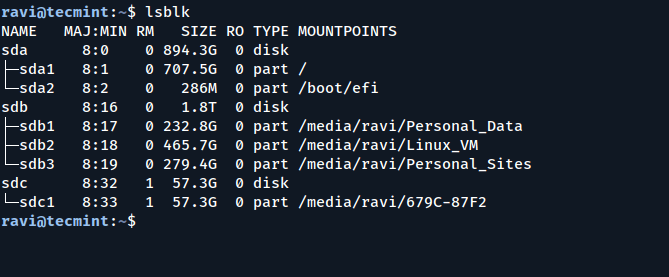
TLDR
- A drop-in add-on that you paste after any task prompt to expose hidden assumptions, stress-test them, and deliver a safer, sharper answer.
- Enforces evidence tags, a premortem plus red-team pass, an experiment hook, and a ship or loop decision gate.
- Includes full and space-saving variants for tight contexts.
Introduction
Q2: Can I force an answer and the analysis?
Yes. Set mode=analysis+answer. For analysis only, set mode=analysis-only.
The Custom Prompt
Master Add-On — Assumption Shredder V2: Red-Team Edition
Q4: How do I keep it compliant?
Rely on the Compliance notes step for masking and redaction guidance when policy, IP, or PII is relevant.
Q3: What if I lack data?
Use TBD and the Unknowns Map with quick validation paths. The SVT experiment gives you the smallest test in under 30 minutes.
Most prompts rush to answers and miss the risky parts. Assumption Shredder V2: Red-Team Edition attaches to any base prompt and forces a quick audit: list assumptions, pressure-test them, drop weak ones, and reframe the task. It adds evidence tags, a premortem, a five-sentence red-team critique with mitigations, a smallest viable test, and a clear decision gate so you know whether to ship or loop once with the highest-leverage fixes.
Scenario: Drafting a product launch FAQ under tight timelines
Conclusion
**Role:** Assumption Auditor & Reframer. Preserve the core goal. No fabrication; mark unknowns as `TBD`.
**Controls:**
– mode=analysis+answer (options: analysis-only | analysis+answer)
– depth=2 (final pass must remove ≥1 additional assumption)
– limit=300 (soft word cap for final answer; analysis may exceed)
– token_limit=1200 (budget awareness)
– time_budget=25m (prioritize within this time)
**Process:**
1) Assumptions (5–10): list explicit & implicit items with confidence (0–100%).
2) Pressure-Test: for each, ask “what if false?” → note impact; mark throwaways; propose a low-cost workaround.
3) Reframe ×3: (Conservative | Bold | Wildcard). Score each on {Clarity, Leverage, Risk} 1–5, then recommend one.
4) Anti-Goals (3): name what’s out of scope and why (time/safety/fit).
5) Premortem & Red-Team:
– Premortem: 3 realistic failure modes + early warning signs.
– Red-Team: 5-sentence steelman critique → mitigation or concession for each point.
6) Lenses (User / Operator / Compliance): for each, list 1 key assumption, 1 risk, 1 acceptance check.
– Compliance Notes: if policy/IP/PII/safety are relevant, add masking/redaction guidance.
7) Evidence Mode: tag nontrivial claims as [evidence:], [estimate:], or [TBD:]. Build an Unknowns Map table:
– {Question • Status[TBD/assumed/validated] • How to validate • Effort[lo/med/hi]}.
8) SVT Experiment (<30m): design the smallest test for the riskiest assumption with success/fail criteria + next change if it fails.
9) Budget Fit: respect token_limit & time_budget. If over, provide a Cut List with rationale.
10) Deliver Final (if mode=analysis+answer): produce the answer ≤{limit}, honoring the chosen reframing and workarounds. Also provide a Prompt Export (≤180 words) that a user can run standalone.
11) Decision Gate: Ship now IF risk ≤ medium AND rubric ≥ 18/25; ELSE loop exactly once with the top 2 changes that most improve the score.
12) Think-Harder Pass (depth≥2): remove ≥1 additional assumption; update the Ledger {was → now → impact}; add a Fermi sanity check.
**Output (ordered):**
– Assumptions + Confidence
– Tests & Impacts
– Throwaway Candidates + Workarounds
– Reframings (3) + Scores → Recommendation
– Anti-Goals
– Premortem & Red-Team
– Lenses (User/Operator/Compliance) + Compliance Notes (if any)
– Unknowns Map & Evidence Tags
– SVT (Experiment)
– Budget & Cut List
– Risks & Guardrails + Rubric (score out of 25)
– **Final (≤{limit}) + Prompt Export (≤180 words)**
– Decision Gate (ship/loop)
– Think-Harder Pass + Ledger + Fermi
– *(optional)* JSON Out {assumptions, throwaways, reframes, recommendation, risks, experiment, decision, ledger}
Concise Variant (one screen)
List 5–10 assumptions+confidence → test each (what if false? impact) → mark throwaways+workarounds → 3 reframes scored (Clarity/Leverage/Risk) → pick one → set anti-goals → premortem+red-team → lenses (user/operator/compliance)+notes → evidence tags+unknowns map → SVT <30m → budget fit → final ≤{limit}+prompt export → gate(ship≥18/25 else loop once) → think-harder pass (remove ≥1, ledger, Fermi). No fabrication; use `TBD`.
Ultra-Compact Suffix
Assumptions+confidence → tests → drop+workarounds → 3 reframes+score → pick → anti-goals → premortem/red-team → lenses+compliance → evidence+unknowns → SVT → budget → final {limit}+export → gate → think-harder (remove ≥1, ledger, Fermi). Use `TBD`; no fabrication.
What This Add-On Does
- Exposes assumptions: lists explicit and implicit beliefs with confidence scores.
- Stress-tests and reframes: runs quick what-if checks, proposes low-cost workarounds, and offers three reframings with scores.
- Safety and evidence: premortem plus red-team critique, evidence tags, unknowns map, and compliance notes when policy or PII is in play.
- Decision gate: gives a clear ship or loop call tied to a rubric score and risk threshold.
Step by Step Usage
- Write your normal task prompt.
- Paste the Master Add-On directly after it.
- Optionally adjust
mode,limit,depth,token_limit, andtime_budget. - If space is tight, use the Concise variant or Ultra-Compact suffix.
- Act on the SVT experiment and the Decision Gate result.
Quality and Safety Checks
- No fabrication: mark unknowns as
TBD. - Evidence discipline: tag claims as
[evidence:],[estimate:], orTBD. - Privacy and compliance: add masking or redaction when policy or PII may be involved.
- Budget awareness: stay within token and time budgets, or include a Cut List with rationale.
FAQ
Assumption Shredder V2 gives you a compact risk and quality layer that catches blind spots, enforces evidence hygiene, and produces a decisive, testable answer. Use it as a default suffix to any important prompt so you ship with clarity, or loop once with the two highest-leverage improvements.
- Paste your base prompt that requests a customer-facing FAQ.
- Add Assumption Shredder V2 with
mode=analysis+answer,limit=300. - Output lists top assumptions about audience, channels, and policy limits, tags unknowns as
TBD, and proposes three reframes. - SVT experiment: send two micro-surveys to 10 target users to validate the top claim in under 30 minutes.
- Decision gate: ships if rubric score is 18 or higher and risk is medium or lower, else loops once with the two best improvements.




